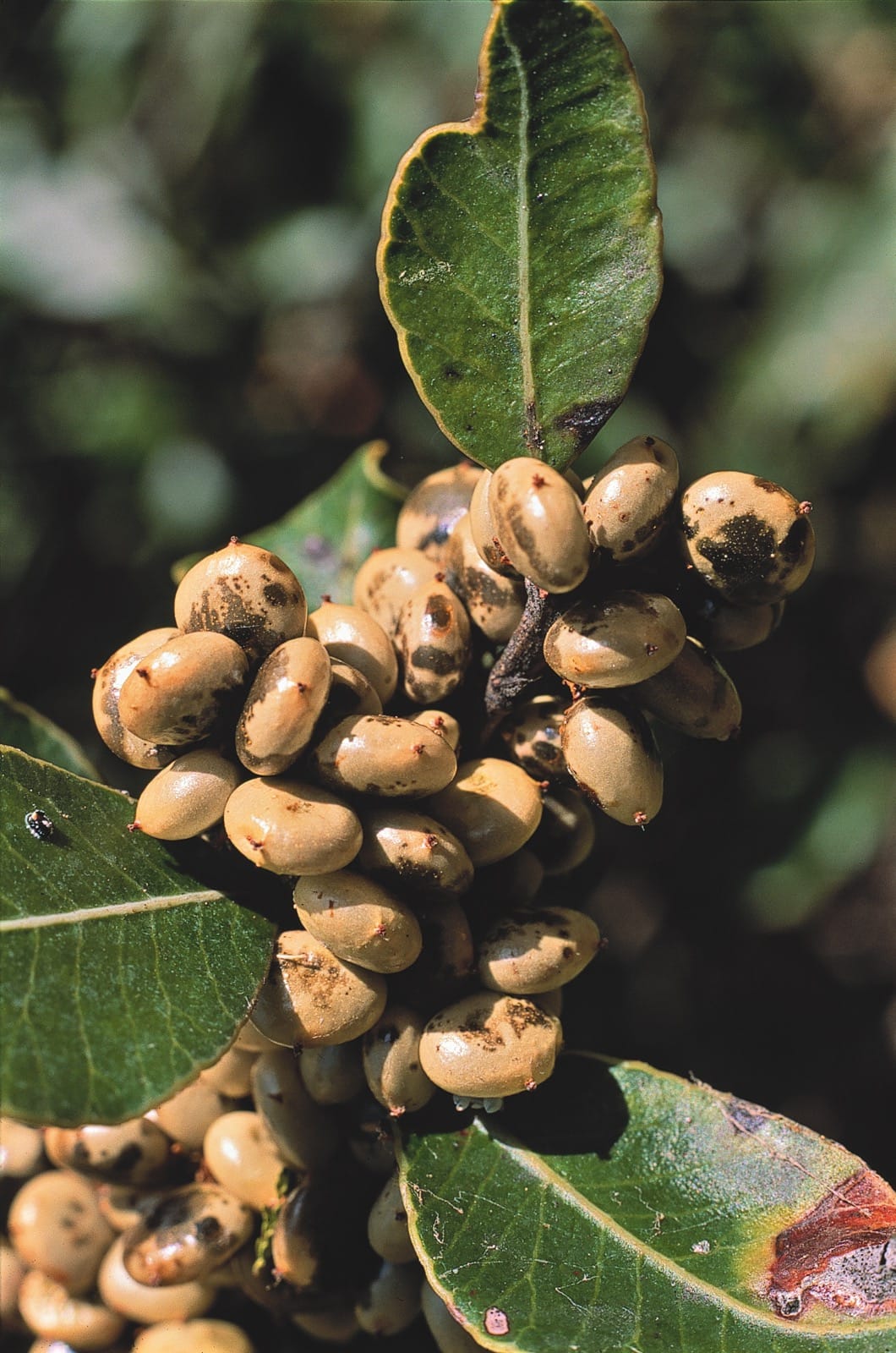Lithraea
Credits
Article from New Trees by John Grimshaw & Ross Bayton
Recommended citation
'Lithraea' from the website Trees and Shrubs Online (treesandshrubsonline.
Family
- Anacardiaceae
The three (or four) species of Lithraea are restricted to South America, and only the Chilean endemic L. caustica is of interest to temperate gardeners. Lithraea species are small, evergreen trees or shrubs. As in many Anacardiaceae, contact with plants can cause dermatitis because of their poisonous sap; the lesions caused by L. caustica are particularly painful and persistent. The leaves are simple and ovate or imparipinnate, and have a winged petiole and rachis. Lithraea is dioecious, though occasional bisexual flowers occur in the inflorescences. These are paniculate and lateral, typically clustered near the shoot apex. The individual flowers are yellow and 5-merous. The fruit is a drupe with white flesh (Rodríguez R. et al. 1983, de Dios Muñoz 2000).

